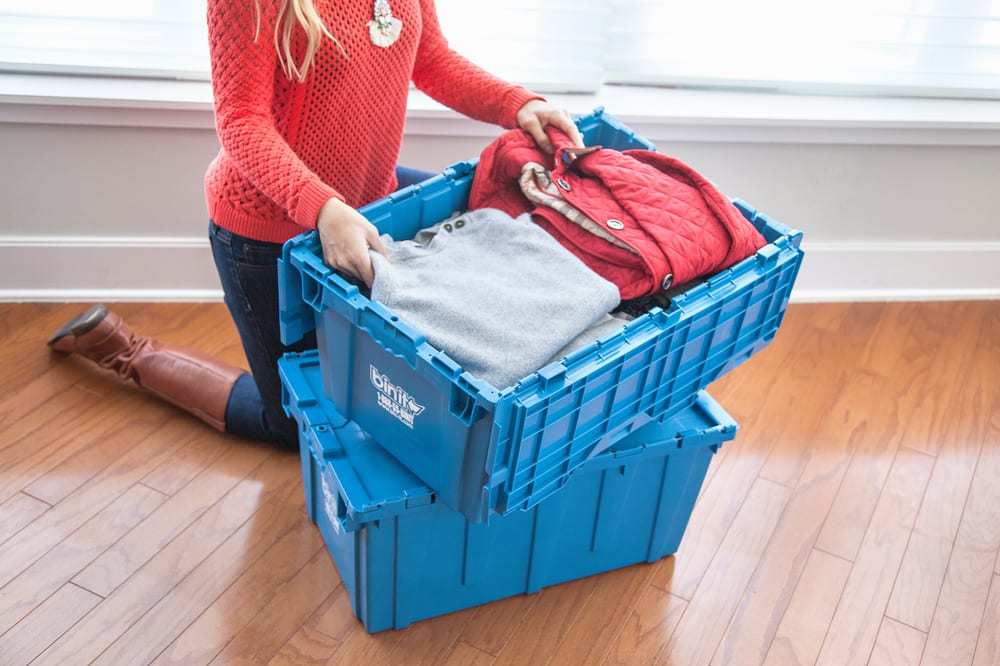
When moving, people underestimate the importance of boxes, their sizes, and, most of all, the proper way to tape and pack them. You can’t just start gathering the boxes you have laying around, tape them up randomly, and expect to move all your belongings without damaging them. Moreover, packing boxes are amongst the most arduous tasks when moving house, other than actually lifting things and moving them around.
If you go about packing boxes the wrong way, you’ll end up making the entire moving process even more strenuous, and worse yet, you could easily end up damaging your belongings.
To help make the process easier for you, we’ve prepared this short guide on how you should tape your moving boxes, pack your stuff, and what mistakes to avoid. This will make your moving experience a lot more relaxing and will even save you time when it’s finally time to unpack and set up your new home.
One of the most common mistakes that people make is not properly taping and the bottom of their boxes, which leads to stuff just falling out the bottom, regardless of whether the box is too heavy or not. The best way to maintain the box’s integrity is to line up the sides as close as possible and make sure there is no overhang. Then secure the sides in place by using two layers of tape and add another layer of tape perpendicularly. Make sure you do this to all boxes regardless of whether you’re packing heavy items in them or not and ensure the tape is high up to the sides of the box.
Tuck in smaller edges before the larger ones and, as explained above, align them to ensure there is no overhang. A good standard in taping boxes is to tape at least halfway up the sides of the box and don’t forget the perpendicular application of tape either. Double layering with proper packing tape is also the prudent and preferred approach. Also, tape the shorter vertical sides of the box, but you don’t need to necessarily go for double layers when taping the vertical sides.
As for the number of boxes you’ll need, you could try using a moving box calculator but be prepared still to make extra runs to the store because chances are your estimate will be wrong. Just be sure to get the right number of boxes because if you start overstuffing, you’ll end up damaging your items and other boxes that have been properly packed as well.
Finally, label each box according to room and items. Labeling your boxes in this way will make the unpacking process much easier and will save you much-needed time and effort.
Your first step in the entire process is to take out all the stuff that you intend to pack out of the drawers, cupboards, and other storage spaces into the room itself. When you’ve got everything out, you’ll then be doing one of the most difficult things of the entire packing process which is getting rid of all the items you don’t need or intend to take with you to your new house. It doesn’t matter what you might argue as we all have things that we don’t need or are no longer of any use.
So whether it’s clothes, shoes, decorative items, old furniture, paperwork, or any other items which you don’t need anymore. Not only will you be lessening your moving workload, but you’ll also be getting rid of clutter. An easy way to do this is to organize all items to be discarded in three piles: throw away, recycle, or donate. Your aim should be to donate as much as you can as it’s always nice to help those in need, but if your items are not in a condition that they can be donated, then you can consider recycling them or throwing them away.
Now that you’re left with only the things you’ll be taking with you, it’s time to organize your items according to how you’ll be packing everything. Then comes the wrapping and you need to wrap everything. Whether it’s fragile or not, sharp-edged or round, you need to wrap. You can use three different types of packing material which are packing paper, plastic wrap, and bubble wrap. To save space and money, you can also use towels and bedsheets to wrap large items.

Let’s be honest, cardboard boxes can be a pain, but we do have a solution. Imagine not needing tape, or worrying about boxes getting crushed during your move. Now, also imagine saving more money not having to use cardboard! At Bin it, we offer an incredible solution to this problem. Instead of buying cardboard that will end up in a landfill, you can simply rent plastic moving boxes from us instead!
Make sure you avoid overstuffing your boxes. Depending on the size of your box and whether it’s single-walled or double-walled, your box can take anywhere between 25 to 150 pounds of weight. When you’re buying boxes make sure you check for this information and don’t exceed any limits or you’ll have a mess to deal with by the time you reach your new home. Not only will you damage your items, but you might also end up injuring yourself in the process.
Make sure you pack a small box that holds all the essentials you’ll need to access immediately upon reaching your new home. This could include toiletries, paperwork, medications, and so on. Keep this essentials box in your own car so you can have access to these essentials without having to worry about when the moving truck will reach your new home. Have one box per individual with all of that individual’s essential items, and the same goes for any pets you might have as well.
If you’re going to save yourself the trouble of moving by choosing to hire a moving company instead that doesn’t mean you can throw all worry to the wind. You’ll still need to make sure that everything we discussed above is being followed by the movers too. So ensure that they’ve got all the packing materials and boxes. Also, make sure they don’t overstuff any of the boxes. Moreover, you also need to be the one labeling the boxes and organizing all your items for the movers so nothing gets misplaced or lost.